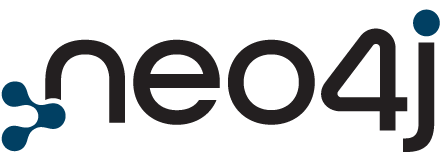DBMS > Amazon Neptune vs. Blazegraph vs. Titan
System Properties Comparison Amazon Neptune vs. Blazegraph vs. Titan
Please select another system to include it in the comparison.
| Editorial information provided by DB-Engines | ||||||||||||||||||||||||||||||||||||||||||||||||||||||||||||||||||||||||||||||||||||||||||||||||||
| Name | Amazon Neptune Xexclude from comparison | Blazegraph Xexclude from comparison | Titan Xexclude from comparison | |||||||||||||||||||||||||||||||||||||||||||||||||||||||||||||||||||||||||||||||||||||||||||||||
| Amazon has acquired Blazegraph's domain and (probably) product. It is said that Amazon Neptune is based on Blazegraph. | Titan has been decommisioned after the takeover by Datastax. It will be removed from the DB-Engines ranking. A fork has been open-sourced as JanusGraph. | |||||||||||||||||||||||||||||||||||||||||||||||||||||||||||||||||||||||||||||||||||||||||||||||||
| Description | Fast, reliable graph database built for the cloud | High-performance graph database supporting Semantic Web (RDF/SPARQL) and Graph Database (tinkerpop3, blueprints, vertex-centric) APIs with scale-out and High Availability. | Titan is a Graph DBMS optimized for distributed clusters. | |||||||||||||||||||||||||||||||||||||||||||||||||||||||||||||||||||||||||||||||||||||||||||||||
| Primary database model | Graph DBMS RDF store | Graph DBMS RDF store | Graph DBMS | |||||||||||||||||||||||||||||||||||||||||||||||||||||||||||||||||||||||||||||||||||||||||||||||
|
|
| ||||||||||||||||||||||||||||||||||||||||||||||||||||||||||||||||||||||||||||||||||||||||||||||||
| Website | aws.amazon.com/neptune | blazegraph.com | github.com/thinkaurelius/titan | |||||||||||||||||||||||||||||||||||||||||||||||||||||||||||||||||||||||||||||||||||||||||||||||
| Technical documentation | aws.amazon.com/neptune/developer-resources | wiki.blazegraph.com | github.com/thinkaurelius/titan/wiki | |||||||||||||||||||||||||||||||||||||||||||||||||||||||||||||||||||||||||||||||||||||||||||||||
| Developer | Amazon | Blazegraph | Aurelius, owned by DataStax | |||||||||||||||||||||||||||||||||||||||||||||||||||||||||||||||||||||||||||||||||||||||||||||||
| Initial release | 2017 | 2006 | 2012 | |||||||||||||||||||||||||||||||||||||||||||||||||||||||||||||||||||||||||||||||||||||||||||||||
| Current release | 2.1.5, March 2019 | |||||||||||||||||||||||||||||||||||||||||||||||||||||||||||||||||||||||||||||||||||||||||||||||||
| License | commercial | Open Source | Open Source | |||||||||||||||||||||||||||||||||||||||||||||||||||||||||||||||||||||||||||||||||||||||||||||||
| Cloud-based only | yes | no | no | |||||||||||||||||||||||||||||||||||||||||||||||||||||||||||||||||||||||||||||||||||||||||||||||
| DBaaS offerings (sponsored links) Providers of DBaaS offerings, please contact us to be listed. | ||||||||||||||||||||||||||||||||||||||||||||||||||||||||||||||||||||||||||||||||||||||||||||||||||
| Implementation language | Java | Java | ||||||||||||||||||||||||||||||||||||||||||||||||||||||||||||||||||||||||||||||||||||||||||||||||
| Server operating systems | hosted | Linux OS X Windows | Linux OS X Unix Windows | |||||||||||||||||||||||||||||||||||||||||||||||||||||||||||||||||||||||||||||||||||||||||||||||
| Data scheme | schema-free | schema-free | yes | |||||||||||||||||||||||||||||||||||||||||||||||||||||||||||||||||||||||||||||||||||||||||||||||
| Typing | yes | yes | yes | |||||||||||||||||||||||||||||||||||||||||||||||||||||||||||||||||||||||||||||||||||||||||||||||
| XML support | no | |||||||||||||||||||||||||||||||||||||||||||||||||||||||||||||||||||||||||||||||||||||||||||||||||
| Secondary indexes | no | yes | yes | |||||||||||||||||||||||||||||||||||||||||||||||||||||||||||||||||||||||||||||||||||||||||||||||
| SQL | no | SPARQL is used as query language | no | |||||||||||||||||||||||||||||||||||||||||||||||||||||||||||||||||||||||||||||||||||||||||||||||
| APIs and other access methods | OpenCypher RDF 1.1 / SPARQL 1.1 TinkerPop Gremlin | Java API RESTful HTTP API SPARQL QUERY SPARQL UPDATE TinkerPop 3 | Java API TinkerPop Blueprints TinkerPop Frames TinkerPop Gremlin TinkerPop Rexster | |||||||||||||||||||||||||||||||||||||||||||||||||||||||||||||||||||||||||||||||||||||||||||||||
| Supported programming languages | C# Go Java JavaScript PHP Python Ruby Scala | .Net C C++ Java JavaScript PHP Python Ruby | Clojure Java Python | |||||||||||||||||||||||||||||||||||||||||||||||||||||||||||||||||||||||||||||||||||||||||||||||
| Server-side scripts | no | yes | yes | |||||||||||||||||||||||||||||||||||||||||||||||||||||||||||||||||||||||||||||||||||||||||||||||
| Triggers | no | no | yes | |||||||||||||||||||||||||||||||||||||||||||||||||||||||||||||||||||||||||||||||||||||||||||||||
| Partitioning methods | none | Sharding | yes | |||||||||||||||||||||||||||||||||||||||||||||||||||||||||||||||||||||||||||||||||||||||||||||||
| Replication methods | Multi-availability zones high availability, asynchronous replication for up to 15 read replicas within a single region. Global database clusters consists of a primary write DB cluster in one region, and up to five secondary read DB clusters in different regions. Each secondary region can have up to 16 reader instances. | yes | yes | |||||||||||||||||||||||||||||||||||||||||||||||||||||||||||||||||||||||||||||||||||||||||||||||
| MapReduce | no | no | yes | |||||||||||||||||||||||||||||||||||||||||||||||||||||||||||||||||||||||||||||||||||||||||||||||
| Consistency concepts | Immediate Consistency | Immediate Consistency or Eventual Consistency depending on configuration | Eventual Consistency Immediate Consistency | |||||||||||||||||||||||||||||||||||||||||||||||||||||||||||||||||||||||||||||||||||||||||||||||
| Foreign keys | yes | yes | yes | |||||||||||||||||||||||||||||||||||||||||||||||||||||||||||||||||||||||||||||||||||||||||||||||
| Transaction concepts | ACID | ACID | ACID | |||||||||||||||||||||||||||||||||||||||||||||||||||||||||||||||||||||||||||||||||||||||||||||||
| Concurrency | yes | yes | yes | |||||||||||||||||||||||||||||||||||||||||||||||||||||||||||||||||||||||||||||||||||||||||||||||
| Durability | yes | yes | yes | |||||||||||||||||||||||||||||||||||||||||||||||||||||||||||||||||||||||||||||||||||||||||||||||
| User concepts | Access rights for users and roles can be defined via the AWS Identity and Access Management (IAM) | Security and Authentication via Web Application Container (Tomcat, Jetty) | User authentification and security via Rexster Graph Server | |||||||||||||||||||||||||||||||||||||||||||||||||||||||||||||||||||||||||||||||||||||||||||||||
More information provided by the system vendorWe invite representatives of system vendors to contact us for updating and extending the system information, | ||||||||||||||||||||||||||||||||||||||||||||||||||||||||||||||||||||||||||||||||||||||||||||||||||
Related products and servicesWe invite representatives of vendors of related products to contact us for presenting information about their offerings here. | ||||||||||||||||||||||||||||||||||||||||||||||||||||||||||||||||||||||||||||||||||||||||||||||||||
| More resources | ||||||||||||||||||||||||||||||||||||||||||||||||||||||||||||||||||||||||||||||||||||||||||||||||||
| Amazon Neptune | Blazegraph | Titan | ||||||||||||||||||||||||||||||||||||||||||||||||||||||||||||||||||||||||||||||||||||||||||||||||
| DB-Engines blog posts | Graph DBMS increased their popularity by 500% within the last 2 years Graph DBMSs are gaining in popularity faster than any other database category Zupee implements Amazon Neptune to detect Wallet transaction anomalies in real time Use Amazon Neptune Analytics to analyze relationships in your data faster, Part 1: Introducing Parquet and CSV import and export Using generative AI and Amazon Bedrock to generate SPARQL queries to discover protein functional information with UniProtKB and Amazon Neptune | Amazon Web Services Introducing the GraphRAG Toolkit How Coinbase provides trustworthy financial experiences through real-time user clustering with Amazon Neptune provided by Google News Back to the future: Does graph database success hang on query language? This AI Paper Introduces A Comprehensive RDF Dataset With Over 26 Billion Triples Covering Scholarly Data Across All Scientific Disciplines provided by Google News DataStax Acquires Aurelius and its TitanDB Graph Database Building a Graph Database on AWS Using Amazon DynamoDB and Titan Titan Graph Database Integration with DynamoDB: World-class Performance, Availability, and Scale for New Workloads Performance Tuning Your Titan Graph Database on AWS DSE Graph review: Graph database does double duty provided by Google News | |||||||||||||||||||||||||||||||||||||||||||||||||||||||||||||||||||||||||||||||||||||||||||||||||
Share this page




